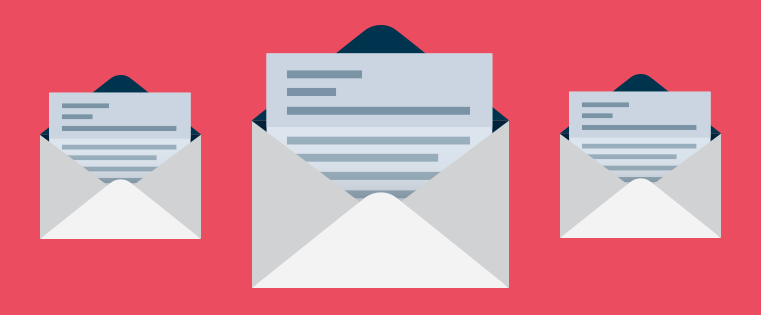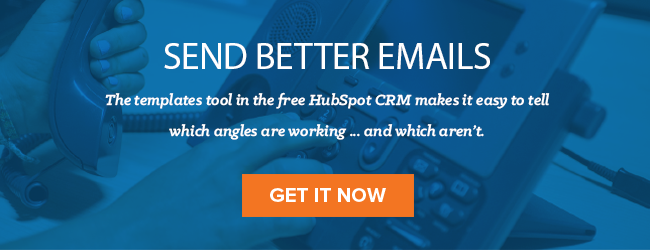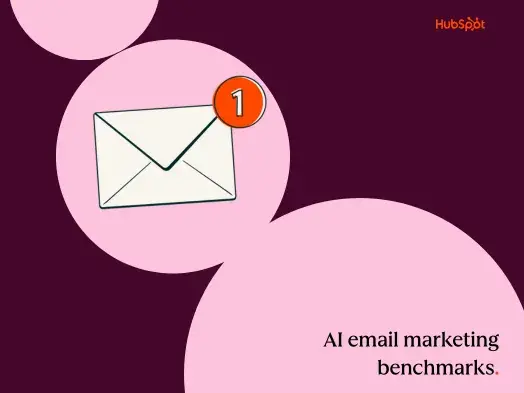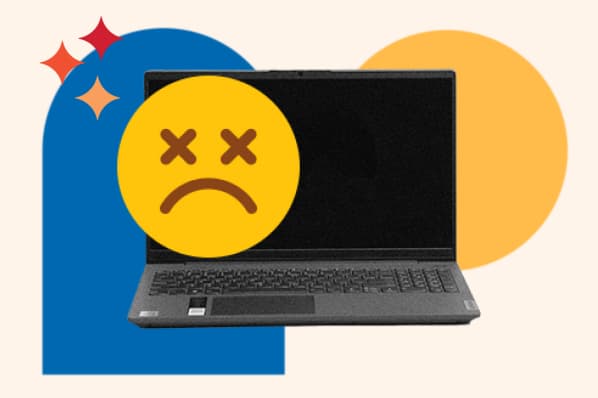
My prospects never read my emails.
This is a common frustration expressed by salespeople who work tirelessly to keep prospects and customers up-to-speed, only to find out that their customer ignores their reports, write-ups, and explanations.
So is the prospect purposefully making your life more difficult, or are you actually the one failing at communication?
Why Your Emails Are Ignored
In a world of content overload, email consistently stands out as the worst kind of content. In 2015, we sent and received more than 205 billion emailsevery single day. What's worse is that these emails often require that the recipient does something. This expectation leads most people to experience a feeling of dread when they open their email inbox, especially when they have a ton of projects already on their to-do list.
But we can't get away from email. So we -- as professional communicators -- need to find the best way to get our clients' attention with limited tools: We've got to work with plain text and just a few design elements.
Making this more challenging is the fact that email is read on screens of varying sizes. While a Kindle ebook is read in standard dimensions, email can be read on mobile, tablet, and desktop. This creates a lack of consistency or rules about how emails should be formatted.
A scrolling wall of email text on a mobile device seems overwhelming:

The same email looks like a quick read on a 24-inch monitor:

To fix these email communication issues, you first need to understand how your client actually reads emails.
How Prospects Read (When They Read)
The science on how we read is pretty clear. In his tremendous ebook The Magic of Reading, Bill Hill explains that we read by "jumping" between words and then "carrying out recognition during pauses or fixations." We recognize patterns across words, word groupings, and sentences, rather than reading the individual letters of every word in an email.
When writing emails, remember to consider how the recipient reads, and think about how you can clue your clients into your message through formatting. Poor layout and styling is about more than making your email look "nice." Reading becomes mentally taxing when it lacks structure. Hill wrote: "Reading becomes hard work. Cognitive capacity normally available exclusively for extracting meaning has to carry an additional load."
To improve the structure of your emails -- and therefore the readability -- follow these three rules:
1) Use the inverted pyramid.
Follow this common piece of advice: Don't bury the lead.
The inverted pyramid is a journalistic approach where you detail the most important information first, specifically the who, what, when, why, and how. Your multi-page reports get an executive summary, why not your lengthy emails? For people who want detail, the words are all there, and for those who don't, you've given them the key takeaways.
2) Build in white space.
Sending a wall of plain text is the worst thing you can do. An intelligent application of including white space using the elements below will create easily scannable emails.
- Line Spacing: Add space between your lines. "Leading" does lengthen emails, especially on mobile, but it will create valuable white space.
- Line Length: Eight to twelve word sentences are universally preferred. Long lines are hard to digest, and short lines slow reading flow.
- Indentation: In long emails, indent your paragraphs to signal the start of a new thought. Indentation is optional in short emails.
3) Use sub-headers to guide.
Many people believe an email should be five lines or less, but sometimes we have to provide in-depth explanations and picking up the phone isn't an option. Sub-headers break up large chunks of content and serve as ways to entice clients to continue reading and skim if they don't want all of the details.
How to Optimize Your Emails
Utilizing text elements well provides your clients with the visual clues to more easily scan your email for the most important messages and takeaways. Consider how you use these text elements in your next email:
- Text Size: Eleven-point size is the standard. Don't change it. Both smaller and larger sizes are read more slowly.
- Font: Letter spacing in fonts is crucial for pattern-recognition. Good fonts have letters close together.
- Italics: Italics is the best tool for emphasizing a word. It's read more slowly than both ordinary and bold text. Don't over-use it, but use it ahead of bold.
- Bold: Use bold for your most important words and points. Whereas italics is used for emphasis, bold should be used to capture attention.
- Underline: Underlining text is unnecessary and can make it look like you're linking to something. Underlining will only confuse your client.
- Bullet Points: Bullet points are the best tool for adding structure, organization, and whitespace. Use them liberally.
- Numbering: If you're asking multiple questions, presenting multiple agenda items, or making multiple points, number them. This helps the reader to keep things organized, limiting miscommunication due to a large amount of information provided.
- Colored Text: Color can be helpful, but be very conservative with your use. If you present action items, you could label red as something the client needs to do, and blue as the deliverables you'll be held to.
- Links: Link out if it helps explain an important point. If using jargon is unavoidable or you reference information or source material that supports your point, link out as a way to clarify.
Using the elements above is a critical factor not just for making your emails enticing, but helping you to craft more clear messages. Simply follow the above best practices for structuring and formatting, and you'll make it easier for your prospects to pay attention and act on your communication.
Editor's note: This post was originally published on HubSpot's Agency Blog. For more content like this, subscribe to Agency.



![Ghosted? How (and when) to send a follow-up email after no response [+ 18 examples]](https://53.fs1.hubspotusercontent-na1.net/hubfs/53/how-to-send-a-follow-up-email-after-no-response.jpg)




![23 Sales Email Templates With 60% or Higher Open Rates [+ Bonus Templates]](https://53.fs1.hubspotusercontent-na1.net/hubfs/53/sales-email-templates-2.jpg)


![How to Introduce Yourself in an Email in [Almost] Every Situation](https://53.fs1.hubspotusercontent-na1.net/hubfs/53/how-to-introduce-yourself-over-email-1.jpg)
